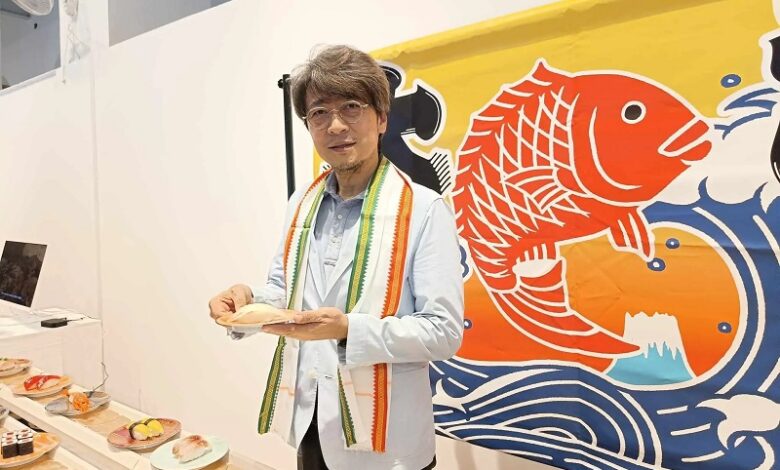Exhibition of “SUSHI” a UNESCO listed Intangible Culinary Cultural Heritage of Japan opened at Indian Museum

By : PARTHA ROY
An exhibition of ” SUSHI “, a culinary speciality and UNESCO listed Intangible cultural heritage of Japan and the world opened at Indian Museum Kolkata on 2nd December 2023 by Consul-General of Japan in Kolkata,
Mr. Nakagawa Koichi and Director, Indian Museum, Kolkata, Mr. Arijit Dutta Chowdhury. The exhibition is organized by Consulate General of Japan in Kolkata , Indian Museum, Kolkata (Ministry of Culture, Government of India) and The Japan Foundation . The exhibition will be open till 22 December 2023.
“SUSHI” is a culinary speciality preparation having primary ingredients of fish ,rice, vinegar which has originated more than 1400 years ago and has evolved over the years . Sushi has originated from Japanese style of fish preservation methods in vinegared rice practiced over 2500 years ago.
Sushi the archetypal example of traditional “Washoku”-Japanese cuisine, made UNESCO’s Intangible Heritage list in 2013.
Today’s style of nigirizushi , consisting of an oblong mound of rice with a slice of fish draped over it, became popular in Edo era in the 1820s or 1830s.
Nigiri is one of the most common types of sushi presentation but Nigiri-zushi is not only sushi available . Literally translated as ‘two fingers’ nigiri comprises a ball of vinegared sushi rice, pressed into an oblong shape and topped with another ingredient.
Since then Sushi preparation has evolved over time and has become popular Japanese culinary item around the world. There are many varieties of Sushi in both non- vegetarian as well as vegetarian.
Sushi, is not only combination of rice, seaweed, vinegar and fish, but extensive selection of plant-based Sushi options available for vegetarian .
Each region of Japan has its own distinctive sushi dishes that have been developed over long periods and reflect local features, climate, and customs. Delivery mechanisms and serving style of Sushi played important role in popularising Sushi consumption in Japan.
Introduction of kaiten sushi (conveyor belt sushi) restaurants in Japan in 1950s expanded Sushi consumption in a big way . Also, selling of moderately priced Sushi through Supermarket in takeaway form promoted Sushi consumption. Preparation of Sushi involves using natural, local ingredient , rice, fish, vegetables, edible wild plants. While preparing Sushi great respect paid to the seasons as well as social practice based on a set of skills, knowledge, practice and traditions related to the production, processing, preparation and consumption of food. It is associated with an essential spirit of respect for nature that is closely related to the sustainable use of natural resources.
Sushi can play important role in management of contemporary global food challenges .






